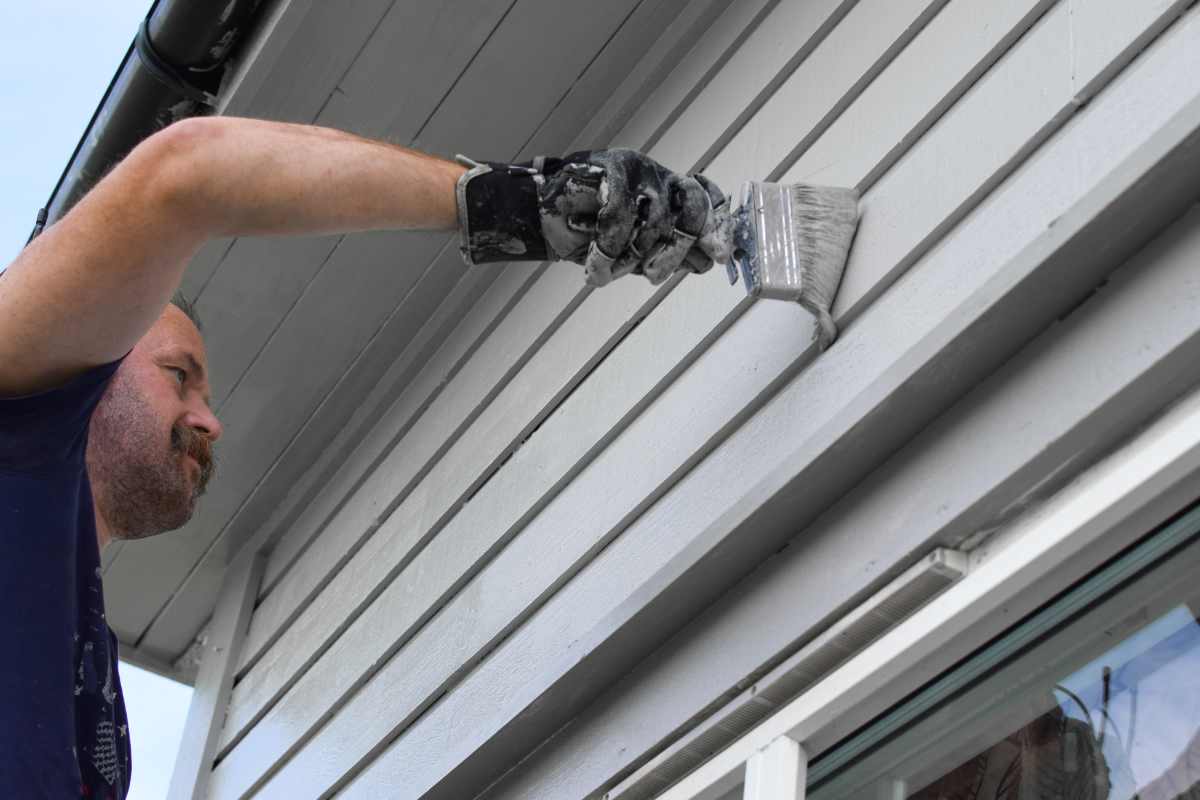
Prepare and Plan:
Before you embark on an exterior painting project, thorough preparation and planning are key. Begin by assessing the condition of your home’s exterior. Look for any peeling or chipped paint, cracks, or damage to the surfaces. Make a list of the materials you’ll need, such as paint, primers, brushes, and masking tape.
Choose the Right Paint:
Selecting the right paint is crucial for a successful exterior painting job. Opt for high-quality exterior paints that are durable and weather-resistant. Consider the climate in your area, as different weather conditions may require specific types of paint. A well-chosen paint can protect your home and maintain its appearance for years.
Surface Preparation:
Proper surface preparation is the foundation of a long-lasting paint job. Begin by cleaning the exterior surfaces thoroughly, removing dirt, mold, and mildew. Use a pressure washer for efficiency, but be cautious with the pressure to avoid damage. Repair any cracks or holes with filler, and sand the surfaces to create a smooth, even foundation for the paint.
Protect Your Surroundings:
When undertaking an exterior painting project, it’s essential to protect the surrounding areas. Cover plants, bushes, and outdoor furniture with plastic sheeting or drop cloths to prevent them from getting splattered with paint. Use masking tape and painter’s plastic to cover windows, doors, and any areas you want to keep paint-free.
Use the Right Tools:
Invest in high-quality painting tools to ensure a professional finish. Quality brushes and rollers can make a significant difference in the application of paint. Consider using a paint sprayer for large surfaces, as it can save time and provide a more even coat. Make sure your tools are clean and in good condition before starting the painting process.
Apply Primer:
Applying a primer is a crucial step in exterior painting. Primer helps the paint adhere better to the surface, enhances durability, and provides a more uniform finish. Be sure to choose a primer suitable for the type of surface you are painting. Apply the primer evenly and allow it to dry thoroughly before applying the topcoat.
Choose the Right Time:
Timing is essential when it comes to exterior painting. Avoid painting in extreme weather conditions such as intense heat, rain, or high humidity. Ideally, choose a time when the weather is mild and dry, allowing the paint to cure properly. This ensures a smooth, long-lasting finish.
Apply Paint with Care:
When it’s time to apply the paint, work carefully and methodically. Start from the top and work your way down, applying the paint evenly and consistently. Be mindful of drips and streaks, and correct them promptly. Multiple thin coats are preferable to a single thick coat for a more professional look.
Allow for Proper Drying:
After completing the painting process, allow sufficient time for the paint to dry and cure. Avoid touching or putting pressure on the freshly painted surfaces. This waiting period ensures that the paint fully adheres and provides the best results. Check the manufacturer’s recommendations for the specific drying times of the paint you’ve chosen.
Regular Maintenance:
Once your exterior painting project is complete, plan for regular maintenance to keep your home looking fresh. Inspect the painted surfaces periodically for any signs of wear or damage. Touch up any areas that may need attention to extend the life of your exterior paint job.
In summary, exterior painting can transform the look of your home and enhance its curb appeal. By following these exterior painting tips, you’ll not only achieve a beautiful finish but also ensure the longevity of your paint job. For expert guidance and professional assistance, consider reaching out to Exterior Painting Tips specialists who can provide personalized advice for your specific project.
